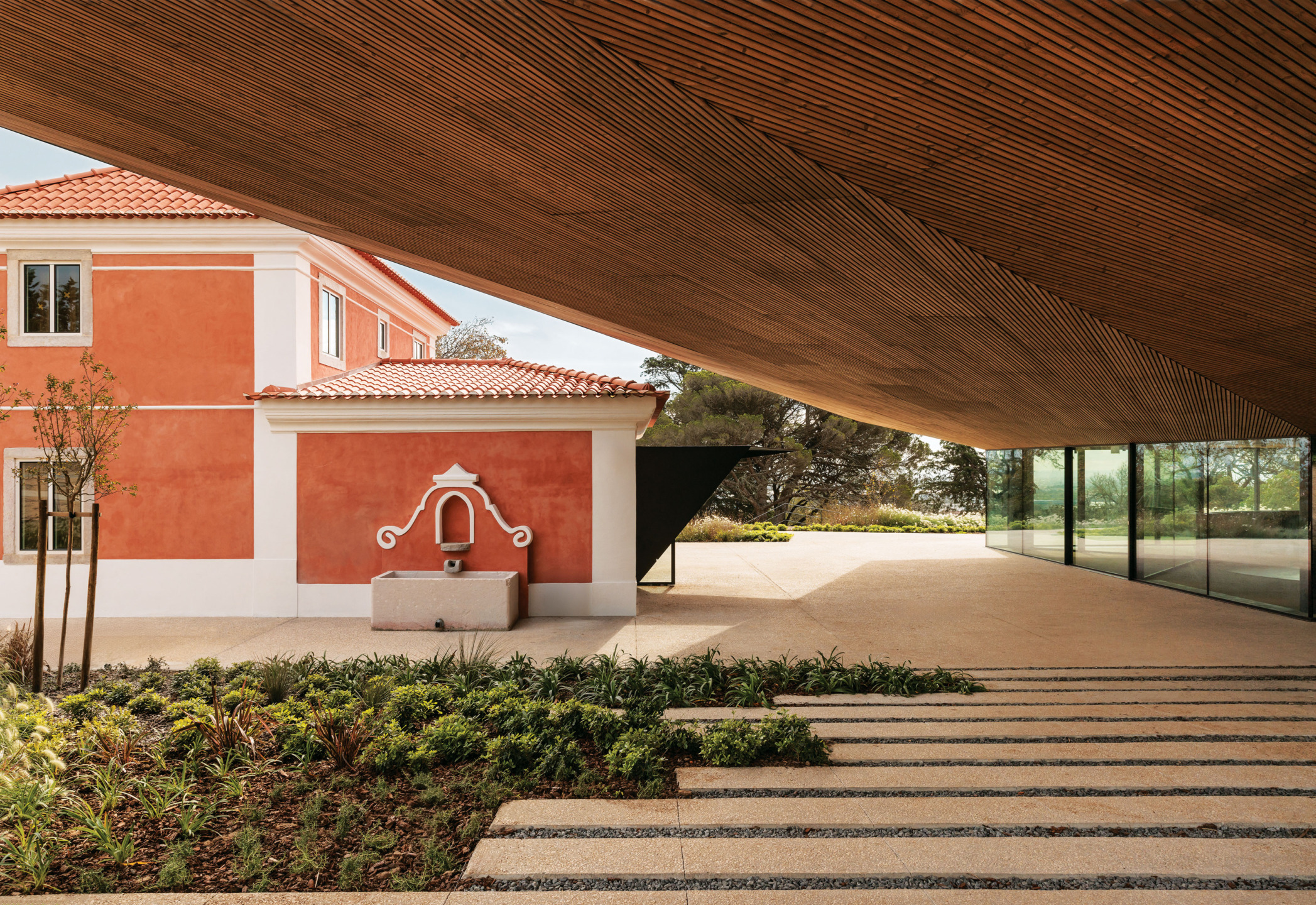An 18th-Century Country House Is Transformed Into Portugal’s Albuquerque Foundation
A dynamic new institution displays some of the finest Chinese porcelain in the world alongside works by Theaster Gates in a dramatic palace setting

There have always been plenty of reasons to visit Sintra, a fairy-tale hilltop town known for its cluster of palaces not far from the Portuguese capital of Lisbon. But now there is another: an old family estate that has been converted into a new institution dedicated to historic and contemporary ceramics called the Albuquerque Foundation.
The destination is named for Renato de Albuquerque, a Brazilian engineer who has assembled one of the finest private collections of highly decorated porcelain in the world. “My grandfather is still acquiring work at the age of 97,” says Mariana Teixeira de Carvalho, who is a cofounder of the foundation and chair of its board. She explains that his fascination with ceramics started with the Meissen pieces brought to Brazil by German expatriates. “But he became more taken with Chinese works and particularly those known as first order, many of which were made for the Portuguese, who began trading in China in the 16th century.”

A terra-cotta-colored country house, originally built in the 18th century, now contains a library filled with a fraction of de Albuquerque’s books, a museum-quality resource of works in French, Chinese, and English; a stylish shop; and a café. Upstairs are bedrooms for artists who are invited for residencies.

The foundation’s purpose is to highlight the cultural and sociological value of the collection, and to select contemporary artists to show their work there in dialogue. The first of those, Theaster Gates, has an exhibition on display through August
in the generous pavilion at the lower end of the estate. “My installation is an attempt broadly to highlight the presence of some sense of Asian aesthetics in my work, and how the influence of China, Korea, and Japan has helped to shape what I make,” says Gates, who covered the floor in special nearly black tiles made in Tokoname, Japan, then filled the gallery with “Tar” paintings and decorated plates.
The tiles arrived from Asia by sea along the same route as first-order porcelain. “It is good to know,” says Gates, “that some things change and some things stay the same.”
A version of this article first appeared in print in our 2025 Summer Issue under the headline “Solid Foundation.” Subscribe to the magazine.